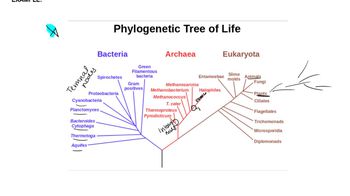Table of contents
- 1. Introduction to Genetics51m
- 2. Mendel's Laws of Inheritance3h 37m
- 3. Extensions to Mendelian Inheritance2h 41m
- 4. Genetic Mapping and Linkage2h 28m
- 5. Genetics of Bacteria and Viruses1h 21m
- 6. Chromosomal Variation1h 48m
- 7. DNA and Chromosome Structure56m
- 8. DNA Replication1h 10m
- 9. Mitosis and Meiosis1h 34m
- 10. Transcription1h 0m
- 11. Translation58m
- 12. Gene Regulation in Prokaryotes1h 19m
- 13. Gene Regulation in Eukaryotes44m
- 14. Genetic Control of Development44m
- 15. Genomes and Genomics1h 50m
- 16. Transposable Elements47m
- 17. Mutation, Repair, and Recombination1h 6m
- 18. Molecular Genetic Tools19m
- 19. Cancer Genetics29m
- 20. Quantitative Genetics1h 26m
- 21. Population Genetics50m
- 22. Evolutionary Genetics29m
17. Mutation, Repair, and Recombination
Types of Mutations
Problem 3d
Textbook Question
Price et al. [(1999). J. Bacteriol. 181:2358–2362] conducted a genetic study of the toxin transport protein (PA) of Bacillus anthracis, the bacterium that causes anthrax in humans. Within the 2294-nucleotide gene in 26 strains they identified five point mutations—two missense and three synonyms—among different isolates. Necropsy samples from an anthrax outbreak in 1979 revealed a novel missense mutation and five unique nucleotide changes among ten victims. The authors concluded that these data indicate little or no horizontal transfer between different B. anthracis strains.
On what basis did the authors conclude that evidence of horizontal transfer is absent from their data?
 Verified step by step guidance
Verified step by step guidance1
span>Step 1: Understand the concept of horizontal gene transfer (HGT). HGT is the movement of genetic material between organisms other than through vertical transmission (from parent to offspring). It is common in bacteria and can lead to genetic diversity.</span
span>Step 2: Analyze the genetic study conducted by Price et al. They examined the toxin transport protein (PA) gene in 26 strains of Bacillus anthracis and identified five point mutations.</span
span>Step 3: Note the types of mutations found: two missense mutations (which result in amino acid changes) and three synonymous mutations (which do not change the amino acid sequence).</span
span>Step 4: Consider the findings from the necropsy samples from the 1979 anthrax outbreak, which revealed a novel missense mutation and five unique nucleotide changes among ten victims.</span
span>Step 5: Evaluate the authors' conclusion. The limited number of mutations and the specific types (missense and synonymous) suggest that there is little genetic variation among the strains, which is consistent with a lack of horizontal gene transfer. If HGT were occurring, more diverse genetic changes would likely be observed.</span
Recommended similar problem, with video answer:
 Verified Solution
Verified SolutionThis video solution was recommended by our tutors as helpful for the problem above
Video duration:
4mPlay a video:
Was this helpful?
Key Concepts
Here are the essential concepts you must grasp in order to answer the question correctly.
Horizontal Gene Transfer
Horizontal gene transfer (HGT) is the process by which organisms exchange genetic material outside of traditional reproduction. This can occur through mechanisms such as transformation, transduction, or conjugation. In the context of bacterial genetics, HGT can lead to increased genetic diversity and the spread of traits like antibiotic resistance. Understanding HGT is crucial for interpreting genetic studies, especially in pathogenic bacteria like Bacillus anthracis.
Recommended video:
Guided course

Mapping Genes
Point Mutations
Point mutations are changes in a single nucleotide base pair in the DNA sequence. They can be classified as missense mutations, which alter the amino acid sequence of a protein, or synonymous mutations, which do not change the protein's amino acid sequence. The identification of point mutations in the study indicates genetic variation among strains, which can provide insights into evolutionary relationships and the potential for gene transfer.
Recommended video:
Guided course

Point Mutations
Phylogenetic Analysis
Phylogenetic analysis involves studying the evolutionary relationships among various biological species based on genetic information. By comparing the genetic sequences of different strains, researchers can infer how closely related they are and whether they share a common ancestor. In the study, the lack of significant genetic variation among strains, despite the presence of point mutations, suggests limited horizontal gene transfer, supporting the authors' conclusion.
Recommended video:
Guided course

Phylogenetic Trees

 9:49m
9:49mWatch next
Master Point Mutations with a bite sized video explanation from Kylia Goodner
Start learning


